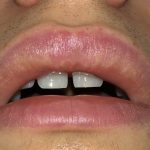Debunking the Truth: Top Dermal Fillers Myths vs Facts

Dermal fillers have become a go-to treatment for those looking to enhance their facial features, smooth out wrinkles, and achieve a more youthful appearance. However, with their rise in popularity comes a host of filler myths and misconceptions. This article will help you separate fact from fiction, so you can make an informed decision about whether dermal fillers are right for you.
What are Dermal Fillers?
Dermal fillers from frayamedsupply.com are injectable treatments designed to restore lost volume, smooth out wrinkles, and enhance facial contours. They are made from a variety of materials, including hyaluronic acid, calcium hydroxylapatite, and poly-L-lactic acid. Each type of filler has its own specific use and area of application. Aesthetic treatments, such as fillers and microneedling, should be understood and performed by licensed professionals to ensure effective and safe outcomes.
Dermal fillers are popular for their ability to provide a youthful, radiant appearance without the need for invasive surgery. These treatments offer long-lasting results, making them a preferred choice for those seeking subtle enhancements or a refreshed look.
Separating Fact from Fiction
Myth: All Dermal Fillers are the Same
Fact: Dermal fillers differ in their composition, longevity, and texture. For example, hyaluronic acid fillers, such as the Juvederm Collection of Fillers, come in different formulations designed for various areas of the face. Some fillers are softer and better suited for delicate areas like the lips, while others are firmer, making them ideal for areas that require more structure, like the cheeks.
Not all fillers can be used in the same areas, and each type is FDA-approved for specific uses. The versatility of dermal fillers allows for more tailored treatments that can address individual concerns effectively.
Myth: Dermal Filler Injections are Painful
Fact: While the idea of needles might be intimidating, most people find dermal filler injections to be tolerable. The needles used to inject filler are very fine, and many fillers are infused with lidocaine, a numbing agent, to reduce discomfort during the treatment.
For those who are more sensitive, a numbing cream can be applied 30-45 minutes before the procedure, ensuring a comfortable experience. With proper numbing techniques, dermal filler injections are typically quick and relatively pain-free.
Myth: Dermal Fillers Look Fake or Unnatural
Fact: One of the most common misconceptions about dermal fillers is that they create an unnatural or overdone appearance. However, when administered by a skilled and experienced injector, fillers can enhance your natural features in a subtle and elegant way.
Lip filler, for example, can be used to achieve a natural and balanced look, addressing concerns about side effects, pain, and the longevity of the results.
A trained professional understands facial anatomy and knows how to tailor the treatment to your specific features, ensuring that the results complement your natural look. The goal is to help you look refreshed, not altered.
Myth: Dermal Fillers are Permanent
Fact: Most dermal fillers, particularly those made from hyaluronic acid, are not permanent. In fact, one of the advantages of hyaluronic acid fillers is that they can be reversed if needed. An enzyme called hyaluronidase can be injected to break down the filler, offering a safe way to adjust or remove the filler if you’re unhappy with the results.
This reversibility gives patients peace of mind, knowing that any unwanted results can be safely addressed. Additionally, lip augmentation with hyaluronic acid fillers can achieve lasting results, considering factors like individual metabolism and the importance of working with a qualified injector.
Myth: Dermal Fillers Stretch or Sag the Skin
Fact: Dermal fillers are designed to add subtle volume to the skin without affecting skin laxity. In fact, fillers can stimulate collagen production, which helps improve skin elasticity over time. When administered by a licensed and experienced provider, fillers enhance skin quality without causing sagging or laxity.
Fillers work with your skin’s natural structure to provide a youthful, firm appearance, making them a reliable option for rejuvenation.
Safety and Side Effects of Dermal Fillers
When considering dermal fillers, it’s essential to be aware of their safety profile and potential side effects. While dermal fillers are generally safe, understanding what to expect can help you make an informed decision.
The Importance of a Qualified Practitioner
Although many spas, physicians, nurses, and even dentists offer dermal filler treatments, it’s crucial to choose a qualified and experienced practitioner for injectable fillers. Proper training ensures that the injector can deliver optimal results while minimizing risks.
A skilled practitioner will assess your unique facial structure and tailor the treatment to your specific needs. They will also be able to meet safety standards, avoiding complications such as infections, lumps, or uneven results. Your practitioner’s expertise is the key to achieving natural, balanced outcomes.
Dermal Filler vs Neurotoxin: What’s the Difference?
Dermal fillers and neurotoxins like Botox or Dysport are both injectable treatments, but they serve different purposes:
- Neurotoxins work by temporarily relaxing the muscles responsible for dynamic wrinkles, such as crow’s feet or forehead lines. These are the wrinkles that form from repeated facial expressions.
- Dermal fillers, on the other hand, are used to treat static wrinkles, which are present even when the face is at rest. Fillers add volume to areas that have lost fullness over time, such as the cheeks or lips, and smooth out deeper wrinkles.
Understanding the difference between these two treatments is essential in choosing the right approach for your skin concerns.
Choosing the Right Dermal Filler for You
The right dermal filler treatment depends on your personal goals and the areas you wish to enhance. Whether you’re looking to add fullness to your lips, restore volume to your cheeks, or smooth out wrinkles, there are different fillers designed for each purpose. Lip filler treatment is a versatile option that can enhance your lip appearance and is increasingly popular among both men and women.
Consulting with a qualified provider is the best way to determine which dermal filler is right for you. They can help assess your skin and recommend a treatment plan that aligns with your aesthetic goals, ensuring natural and satisfying results.
Conclusion
Dermal fillers are a safe and effective way to achieve a more youthful and radiant appearance. By separating fact from fiction, you can better understand how dermal fillers work and what to expect from the treatment. Remember, choosing a qualified practitioner is crucial to ensuring that your treatment is safe and your results are natural.
If you’re considering dermal fillers, consult with an experienced provider to discuss your goals and determine the best treatment for your individual needs. With the right approach, dermal fillers can help you achieve beautiful, long-lasting results.





